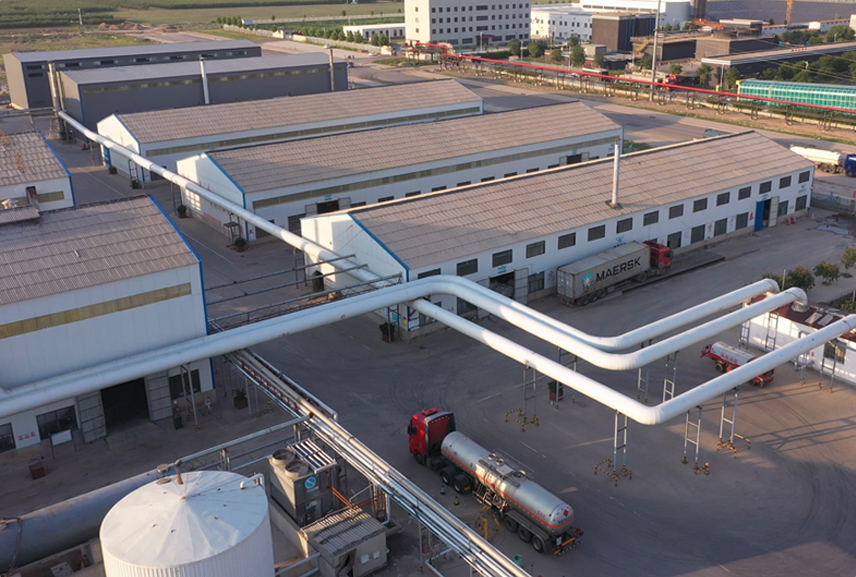Wall putty, also known as putty coating, is a decorative and functional smoothing material used for indoor or outdoor wall construction. It is used to hide or remove flaws or defects on the surface of the wall substrate to make it smooth in appearance.
HPMC can effectively prevent the putty powder from falling off and cracking during use. This is because HPMC can enhance the internal bonding force of the putty powder, improve the adhesion and stability of the putty powder, thereby reducing the cracking problem caused by rapid evaporation of water.
HPMC can increase the viscosity of the putty powder, maintain the uniformity and stability of the putty powder, and prevent the occurrence of sagging. At the same time, it can also improve the water retention of the putty powder, making the putty powder easier to operate and apply during construction.
| Item | Unit | Standard Specifications |
| Appearance | / | White powder,free flowing |
| Loss on drying | % | 4-6 |
| Residue | % | 3.5 |
| Methyl | % | 49-26 |
| Hydroxypropyl | % | 7-14 |
| Ph value(25C) | / | 6-8.5(neutral) |
| Gel temperature | ℃ | 60 degree/75 degree |
| degree of fineness | mesh | 100 mesh,>96%80 mesh,>100% |
| Apparent density | g/m3 | 0.4-0.6 |
| proportion | g/L | 420-520 |
| Surface Tension(2%solution) | dyn/cm | 42-56 |
| Water retention | % | ≥92 |
| Light Transmittance | % | 65-90 |
| Carbonization temperature | ℃ | 280-300 |
| Discoloration temperature | ℃ | 190-200 |
Related Products
HPMC (Hydroxypropyl Methyl Cellulose)
Better water retention and open time
Better strength development of the mortar
Improved workability
Increased adhesion to a variety of substrates
MHEC (Hydroxyethyl methyl cellulose)
High thickening efficiency and wide range of viscosity grades
Good compatibility
Excellent stability
Good protective colloid activity
RDP (Re-Dispersible Polymer Powder)
High flexibility, good film formation
High water resistance for increased open time
High hydrophobicity, ability to bridge cracks
Viscous texture and high workability
Related Application Categories
Daily Chemical Detergent Grade HPMC Cellulose
Daily chemical Detergent grade hydroxypropyl methyl cellulose (HPMC) is a synthetic high molecular polymer prepared by chemical modification with natural cellulose as raw material.
Bonding mortar is made of cement, quartz sand, polymer binder and various additives through mechanical mixing.
Tile adhesive is a new type of modern decorative material used to paste decorative materials such as ceramic tiles, face tiles, floor tiles and so on. There are many kinds of additives in tile adhesive, but usually adding cellulose ether additives to tile adhesive can improve water retention, thickening effect and open time.
Hydroxypropyl methylcellulose (HPMC) has emerged as a game-changing additive in the evolving world of body wash manufacturing.
Hydroxypropyl methyl cellulose (HPMC) is a non-ionic cellulose ether obtained by cellulose alkalization, etherification, neutralization and washing.
Anti-crack mortar is a mortar made by mixing anti-cracking agent, cement and sand with water in a certain proportion, which can meet certain deformation and remain crack-free.
FAQ
Regarding the relationship between viscosity and temperature in HPMC (HPMC viscosity), what should be noted in practical applications?
What are the differences between HPMC and MC?
What are the formulations for interior and exterior wall putty powder?
What is the application of HPMC in putty powder, and what causes the formation of bubbles in putty powder?


Get in Touch
Interested in how our HPMC can enhance your personal care formulations? Contact us to request a free sample and experience the superior quality of our cellulose ether products.
Related News and Blogs
24
Aug., 2024
Let's meet Indonesia Coatings Exhibition 2024
The 10th Paintistanbul & Turkcoat Fair will be held at the Istanbul Exhibition Center in Turkey from May 8th...
19
Nov., 2021
What Causes A Cracked Putty Layer?
The one-off scraping thickness of the putty is directly proportional to the curing shrinkage strength, which increases in proportion to the tendency of the putty to crack.
04
Nov., 2021
Whether you are carrying out small repairs or building walls, knowing how to mix the mortar needs to be precise. If the mortar is too dry, the blocks will not stick together properly. If it is too wet, flowing mortar can spill out of the joints, resulting in wasted time and materials for clean-up.
25
Oct., 2021
The Effect of Winter Construction Temperature on Tile Adhesives
As we all know, tile adhesive is generally made from cement and mixed with various additives. It is mixed with water at the construction site and then applied to the wall or floor.

Get in Touch
Interested in how our HPMC can enhance your personal care formulations? Contact us to request a free sample and experience the superior quality of our cellulose ether products.